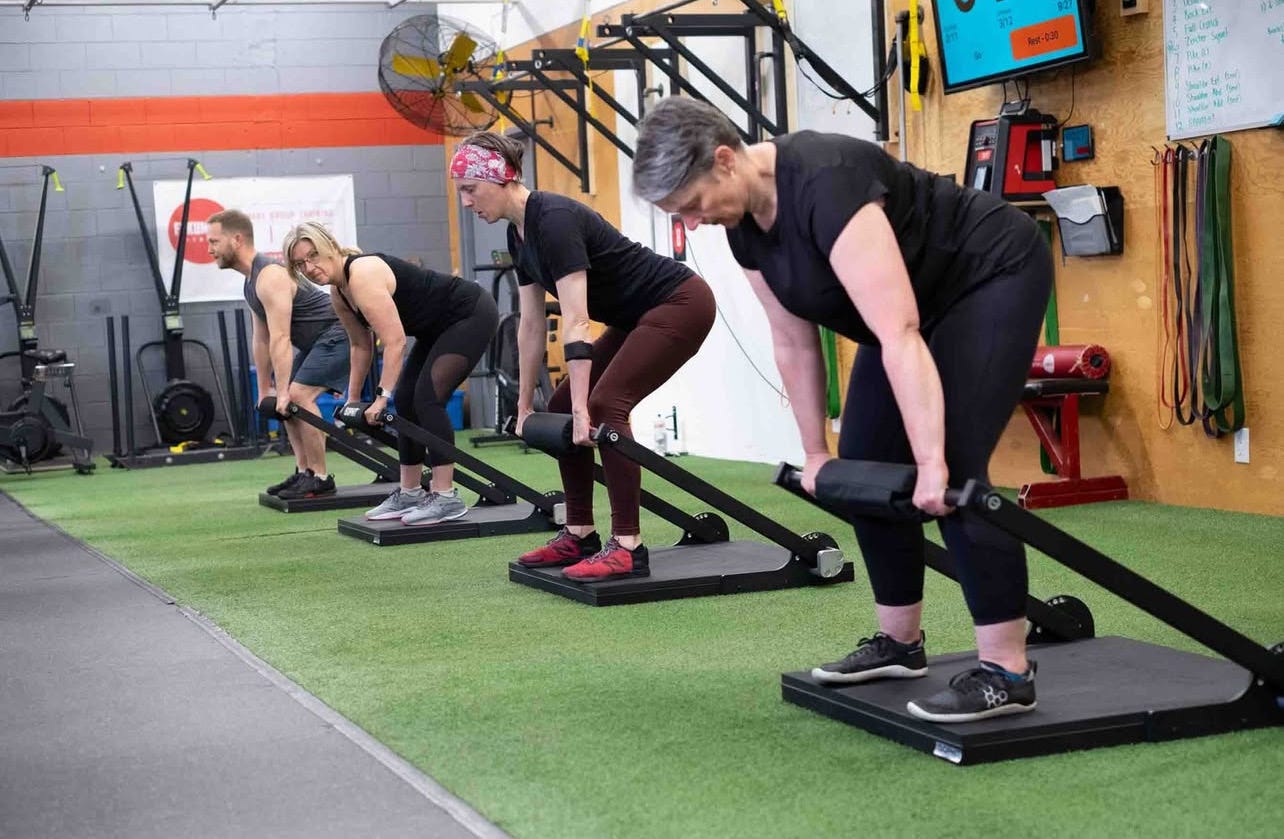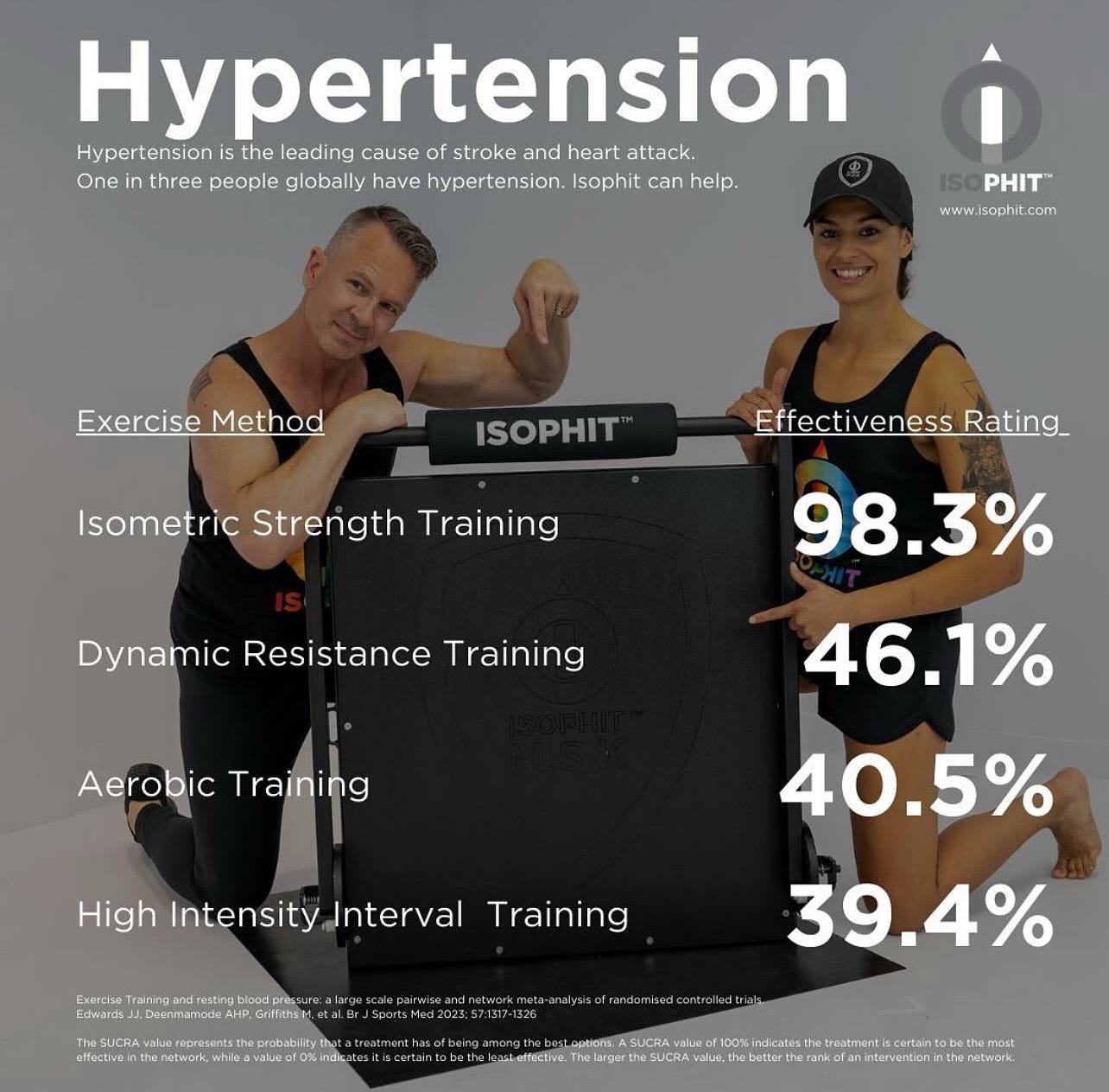Isometric Strength Training: The Singular Solution to a Multifactorial Health Crisis
To be fair, the modern healthcare system wasn’t built to fail us. Over the past century, it has helped extend life expectancy, reduce infant mortality, manage infections, and improve surgical outcomes. Modern medicine has saved lives, and in many ways, it still does. Public health campaigns encouraging exercise, better nutrition, and smoking cessation have had a real impact. There is no shortage of passionate, well-intentioned professionals—from doctors to therapists to researchers—doing their best to help people live longer and better. The prevailing advice—“move more, eat less, take your medication if needed”—makes sense in theory. But in execution, it’s not solving the biggest problems we face.
We are in the midst of a global health crisis that is no longer about infection—it’s about infrastructure. Hypertension. Obesity. Heart disease. Type 2 diabetes. Stroke. Osteoporosis. Alzheimer’s disease. Osteoarthritis. Joint pain. These aren’t rare conditions—they’re common, chronic, and often preventable. And yet, they form the foundation of a multi-trillion dollar economy that profits from ongoing management, not resolution.
The system promotes movement—“movement is medicine,” they say—but often fails to distinguish between types of movement, or whether someone is physically ready for it. The result? Almost 90% of runners experience injuries from running. According to the CDC, more people are hospitalized each year from general gym activity than from playing American football. These aren’t anomalies—they’re signs that we’re pushing people into the wrong kind of activity before their bodies are prepared for it.
Once injured, the individual enters a system designed not to rebuild strength, but to manage symptoms. Diagnostics, physical therapy, painkillers, injections, orthopedics, and ultimately, prescriptions. It’s a loop that rarely ends in long-term health—and one that has become massively profitable for pharmaceutical companies, insurers, and health systems alike.
Let’s take hypertension as an example. It’s the world’s most common chronic disease, affecting over 1.3 billion peopleand leading to heart attacks, strokes, kidney failure, and cognitive decline. The standard prescription: cardio and medication. But in a 2023 study by Edwards et al., isometric strength training lowered systolic blood pressure with 98.3% effectiveness. Aerobic training, in contrast, showed just 40.5%. If this were truly about outcomes, isometric training would be a global mandate. But it’s not. Because isometric strength doesn’t sell like medication. It doesn’t require a refill.
And yet, we continue to tell obese, deconditioned individuals to walk or jog their way to health. That’s not a solution—it’s a setup. For back pain. For joint breakdown. For early dropout. Obesity isn’t just about body fat—it’s about a loss of muscular function and force capacity. People need to be stronger, not just more active. They need to generate force safely and frequently to increase glucose uptake, improve insulin sensitivity, and shift their metabolic profile. But instead, they’re encouraged to chase calorie burn rather than structural restoration.
It’s the same story with osteoporosis and osteoarthritis. These are framed as inevitable consequences of aging, but they’re far more often the result of mechanical under-stimulation. Bones weaken because they aren’t loaded. Joints degrade because they aren’t stabilized. Rather than restore tension to the system, we soften it—padding pain, prescribing pills, and eventually replacing the joint altogether.
Even the brain is being pulled into this cycle. Alzheimer’s disease and vascular dementia are now being linked to metabolic dysfunction, systemic inflammation, and poor circulation. Skeletal muscle, especially when trained isometrically, improves all three. Muscle isn’t just for movement—it’s a hormonal organ. It secretes myokines, powerful proteins that travel through the blood and reduce inflammation, regulate metabolism, and promote neuroplasticity. And yet, almost no one is being told that the fastest route to cognitive protection may be found in building muscular tension without movement.
Isometric strength training offers a uniquely powerful intervention because it solves the very thing that dynamic movement depends on: the body’s ability to resist deformation under stress. It develops whole body, joint-specific strength, improves postural control, increases blood flow, enhances metabolic flexibility, and protects against injury—all without requiring motion. It is the perfect entry point for deconditioned populations, and the missing foundation for high performers.
And that brings us to the next problem: execution.
For years, isometric training was too difficult to scale. It lacked precision, variety, and progression. It was hard to program, hard to measure, and easy to overlook. That’s exactly why I built Isophit—to solve those barriers and deliver the full value of isometric strength to the real world.
Isophit is the world’s leading isometric strength training platform. It allows you to safely train every muscle at every joint angle with millimeter precision. Whether you’re recovering from injury, managing chronic disease, chasing athletic performance, or reclaiming function in later life, Isophit helps you generate force exactly where and how your body needs it most.
The healthcare system isn’t going to change overnight. But you can. Because while chronic disease is multifactorial, the body’s ability to prevent, resist, and recover begins with one thing: its ability to hold itself together under tension.
Isometric strength training is not just a solution—it is the solution the system doesn’t want you to discover.
We’re not against movement, or medicine, or modern rehab. We’re against fragility.
And we’re here to replace it—with strength.
Stronger people are harder to break. That strength starts with Isophit.
At Isophit, we help the world’s strongest, fastest, and most dominant athletes to win more, hurt less, and age stronger!
Imagine what we could do for you. Join Team Isophit at www.isophit.com







